Have You Implemented These Security Best Practices?
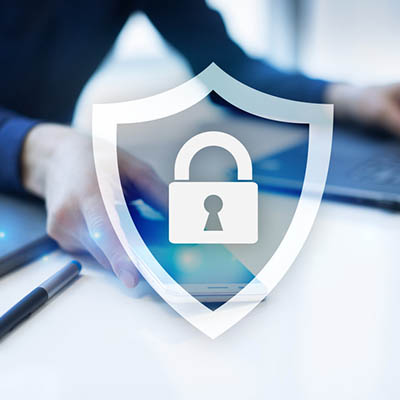
If your business hasn’t put protections in place for your technology infrastructure, that needs to be moved to the top of your to-do list, yesterday. It isn’t as though the increasing number of threats are going to avoid you until your network is prepared to deflect them. Therefore, you need to take action now. To help, we’ll review some of the most important security considerations to make for your organization.
How to Identify If an Email is a Security Risk

There’s one major reason why email is the preferred method of spreading threats like ransomware and other types of malicious software. The sheer number of messages that can be sent through email on its own increases the odds that a user will click on the wrong link or download the wrong attachment. How can you know the legitimacy of any message you receive in your email inbox?
Access Control is Key to Your Business’ Security
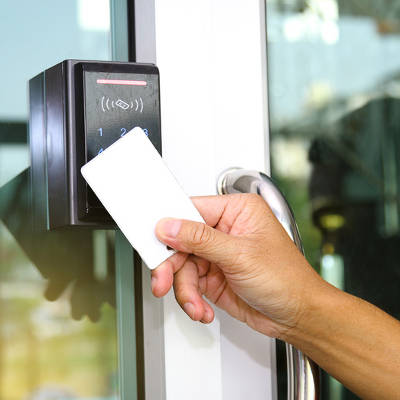
Access control is an extremely useful way to manage a secure computing infrastructure, and one of the best ways your organization can protect important data. However, with innovations in the way that access control is implemented, it’s time to consider what you can do to secure your business’ future in more ways than one. Let’s discuss some best practices regarding access control, as well as some technologies that you can implement to further cement your business’ security.
How to Identify If an Email is a Security Risk

There’s one major reason why email is the preferred method of spreading threats like ransomware and other types of malicious software. The sheer number of messages that can be sent through email on its own increases the odds that a user will click on the wrong link or download the wrong attachment. How can you know the legitimacy of any message you receive in your email inbox?
Access Control is Key to Your Business’ Security

Access control is an extremely useful way to manage a secure computing infrastructure, and one of the best ways your organization can protect important data. However, with innovations in the way that access control is implemented, it’s time to consider what you can do to secure your business’ future in more ways than one. Let’s discuss some best practices regarding access control, as well as some technologies that you can implement to further cement your business’ security.
Ultimately, you should strive toward keeping employees out of information that they have no business having access to in the first place. For example, your human resources department might need access to sensitive information, such as Social Security numbers and dates of birth. Your accounting or finance department might have access to banking information for the purpose of direct deposit, or your business’ own credit card numbers to perform transactions. These employees might need access to this information in order to do their jobs, but the same can’t be said for other employees in your organization.
The ideal solution is to implement access on an individual basis or based on their roles within your organization. Your employees will only have access to information that is required for them to do their jobs, and nothing more. This keeps the risk factor associated with user access mitigated at all times so that you can focus on getting your job done.
Other ways you can provide secure access for your business’ assets is by implementing other barriers for access, such as two-factor authentication, biometric scanning, and physical security measures. Depending on your business’ specific industry, you’ll want a combination of these additional features to maximize your organization’s network security.
Two-Factor Authentication
At the very least, you should consider two-factor authentication, as it helps by adding an additional layer of security. Basically, you have to authenticate yourself further by providing a code that is sent to either a device or an email address that’s associated with your account. These solutions are implemented with the purpose of making things more difficult for would-be hackers, as they are unlikely to follow through with a difficult target.
Biometrics
If relying on a device doesn’t suit your needs, then perhaps you can use your physical characteristics and properties to secure your office and devices. Some systems are equipped with the ability to scan fingerprints and irises, secret agent style, with the intention of only offering those with matching results access to important information or locations. These technologies are becoming more readily available, and some are even offered on commercial products like laptops and smartphones. It’s a great way to make sure that hackers aren’t able to access devices without your specific biological traits.
Physical Security
Sometimes you will have a physical location that you want to protect as much as possible. Physical security often takes advantage of the above solutions, in addition to several others, to provide an adequate level of security for your chosen locations. Many business owners choose to secure their offices with card keys, security cameras, or electronic locks to keep outsiders from infiltrating. While these types of solutions are somewhat more in-depth and difficult to implement based on your location, they can be extraordinarily helpful for a business of any size.
Does your business need to reconsider access control for its most sensitive assets? Catalyst Technology Group can help you substantially improve your organization’s security. To learn more, reach out to us at (317) 705-0333.
How to Identify If an Email is a Security Risk

There’s one major reason why email is the preferred method of spreading threats like ransomware and other types of malicious software. The sheer number of messages that can be sent through email on its own increases the odds that a user will click on the wrong link or download the wrong attachment. How can you know the legitimacy of any message you receive in your email inbox?
It all starts by being aware of the issue at hand and staying vigilant of any potential threats. You should actively look for reasons not to click on links in suspicious emails. You can never be too careful, especially when there is so much on the line. Here are three warning signs that you can look for to avoid a malware attack via email.
Spelling and Grammar Errors
Nobody has perfect spelling and grammar, and it’s forgivable if they make a mistake here or there, but when an email is filled with errors that make it hard to believe its authenticity, perhaps you’re staring a red flag in the face. Professional messages will at least contain passable grammar that makes them easy to understand, but a malicious message might be filled with all sorts of nonsense that urges you to click on a link or download an attachment. Sometimes you might encounter a phishing email that’s very discreet, but this is more of an exception than the norm.
Links Leading to Suspicious or Unfamiliar Targets
Let’s say that you receive a message from your bank. When you hover over a link in the message, it shows that the link doesn’t lead to any site you’re familiar with. This is a clear indicator that you might be looking at a very well-orchestrated phishing scam. Before clicking on any link, just hover your cursor over it without clicking on it. In a bar at the bottom of your browser, you’ll see the target of the link. If it looks suspicious, you can easily disregard it or report it to IT.
Messages from Unknown Senders
Who did you receive the message from? If you know who sent the message, then perhaps the message is legitimate. However, it’s easy for hackers to spoof an email address and make it appear that someone else is sending a message. Remember, suspicion is better than falling into a trap. In a worst-case scenario, even a CEO or upper-level employee could have their account spoofed in a phishing or whaling scheme. If you suspect that this has happened, notify your IT department immediately so that measures can be taken against these efforts.
Thankfully, with a little bit of thought and caution, you can avoid most fraudulent emails, but it would be nicer if you didn’t have to worry about seeing these messages in the first place. An enterprise-level spam filter can keep fraudulent and spam messages at bay. To learn more, reach out to us at (317) 705-0333.
Take These Steps to Make IT Security Top of Mind

Here’s the thing about IT security: it requires a little more than a decent firewall and a reasonably-strong password. We talk a lot about how to ensure that your business’ network stays a top priority, and the best way to do that is to implement what we call a Unified Threat Management (UTM) solution. An enterprise security system like a UTM can provide a considerable improvement for the way you protect your organization, but even something as simple as a little bit of user error could bypass these protocols.
Hackers and cyber criminals have a lot of tricks up their sleeves, and it’s easy to forget that they can be extremely crafty with how they use threats like malware and phishing scams. The past few years have shown that hackers are doing much more than just infecting computers with threats. Instead, they are turning to social engineering and phishing tactics that are designed to weasel their way past even the most experienced workers. They know how to look legitimate and genuinely fool someone into handing over everything they need to succeed. Therefore, there’s only one way to make sure that your company stays safe from these hackers: stay alert and watch out for threats.
But How Do You Stay Cautious?
The best way to stay safe is to make sure everyone is looped in on what’s needed to keep your business secure. To get to this level, it’s best to start with management and administration to ensure that even those at the top of the ladder are taking security seriously. Be sure to keep your C-suite employees looped in on any major security advancements, as well as your HR office to give security the sense of importance that it deserves.
Security Shouldn’t Be a Hassle
Policies such as two-factor authentication or password protection can often be seen as an unnecessary way of making things more difficult for employees to do their jobs as efficiently as possible. You’ll likely get a lot of pushback, even if it’s meant to be a good thing for the company. Instead of lashing out and telling them to do what they’re told, try to get them to understand why the measures are necessary in the first place. The best employees are always the ones that care the most, so do your best to make them care not just on a corporate level, but on an individual level.
Implement Regular IT Check-Ups
Once you’ve figured out the best way to maintain IT security, you should do your part in keeping everyone up to date by holding regular meetings regarding security. It’s important that you make sure to stick to this schedule, as the higher priority your company places on security meetings, the more urgency will be associated with it by default.
Carefully Reinforce Security Measures
It’s imperative that your employees not only understand the importance of security, but that they understand why these processes and procedures are important in the first place. Be sure to document your business’ security best practices in a way which is easy to access, like in the company handbook. Follow this up with training videos, security handouts, or posters around the office. They should also be ready and willing to adapt to change, as the same threats that are a danger to your business now may not be so in the future.
Once most of your team understands that security is crucial, you should establish repercussions for failing to adhere to company security policies. It’s important to remember that most issues can easily be solved, so a first-time offender shouldn’t have their head bit off for forgetting something related to security. Of course, recurring offenses or blatant disregard to company policies should be treated with requisite severity, as all it takes is one unaware employee to completely cripple your organization’s security.
Encourage Reporting and Support Requests
One of the greatest benefits of working with technology is that you can easily put in a support request or report suspicious behavior. However, if an employee isn’t comfortable with doing this, they might not report something important that could have prevented a considerable amount of pain. Furthermore, if they make a mistake, they might be reticent to report it for fear of being punished. Therefore, you should make it clear that you not only encourage reporting issues, but that you expect it.
Catalyst Technology Group wants to be the organization that your business turns to for reinforcement of your company security policies. We can help enforce, audit, and support your business in a way which your internal IT department simply doesn’t have time for. If you don’t have an in-house IT department, we would be happy to act as one for you. To learn more, reach out to us at (317) 705-0333.
Your Guide to Tightening Up Network Security
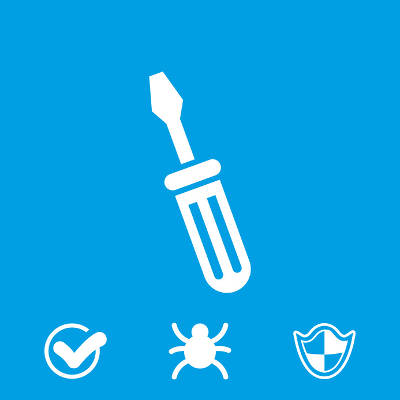
Network security is one of the most important parts of running a business, but you might be surprised by how easy it is to fall prey to some of the more common threats out there. It’s not enough to implement endpoint security or train your employees. Comprehensive network security is a considerable investment that requires not only the utmost care, but enterprise level solutions, backed up with the knowledge of security professionals.
We’ll walk you through some of the ways you can tighten up your network security. Remember, the end goal here is to ensure that your business can not only survive a data breach, but prevent one entirely. As such, you need to take a multilayered approach to network security, including endpoint security, best practices, and patching and system updates.
Endpoint Security – Optimizing Network Security
Your business’ technology needs to be properly secured if you hope to stay in business. For example, your company likely employs the use of multiple different types of technologies, including workstations and server units, to get work done and share information throughout the workday. Furthermore, your employees might bring mobile devices to the table, which adds even more endpoints to your business’ infrastructure. All of these devices need to be secured; otherwise, you’re risking your business’ integrity.
A unified security solution like a Unified Threat Management (UTM) device can provide preventative solutions to keep threats from becoming major problems down the road. You can protect your network with a firewall, antivirus, spam blocker, and content filter, all to keep issues away from your data.
User Best Practices – Creating a Mindful Workforce
The next step toward protecting your infrastructure is to handle the user side of things. By this, we mean the end-user, your employees, or the ones actually using your business’ technology solutions. It’s one thing to implement powerful enterprise-level security solutions, but another entirely if an uninformed user lets threats in through a phishing email or clicking on the wrong link. Therefore, you want to take measures to ensure your employees are trained, or at least relatively competent, with security best practices.
You should always express the importance of security awareness training to your staff, as well as password best practices. Doing so allows you to minimize risk, but more importantly, covers your bases so that you know you’ve done everything in your power to secure your organization. By regularly testing your employees on network security and enforcing security-minded policies, you can significantly reduce the risk of your employees being the cause of security threats.
Patching and System Updates – Maintaining Your Infrastructure
It doesn’t matter how many devices your business owns and uses for operations. Regardless of how many systems are utilized, you will need to patch every system for any potential vulnerabilities. Over time, you might notice in the news that software solutions your business utilizes will become vulnerable to new and emerging threats. In cases like this, you will need to implement patches and security updates to any affected systems. If you don’t, you’re putting your business at unnecessary risk.
Automating patching and system updates will allow your company to focus on more important things, like operations, instead of worrying about how long it will take to update your software and operating systems. In fact, most of these patches and updates can be applied remotely, eliminating the need for an on-site visit.
If your business is concerned about network security, you should consider working with a managed service provider to both augment and reinforce your current network security practices. Catalyst Technology Group can equip your network with all of the above tools so that you can ensure there is minimal risk associated with security troubles. To learn more, reach out to us at (317) 705-0333.
When it Comes to Security, Two Factors are Better Than One
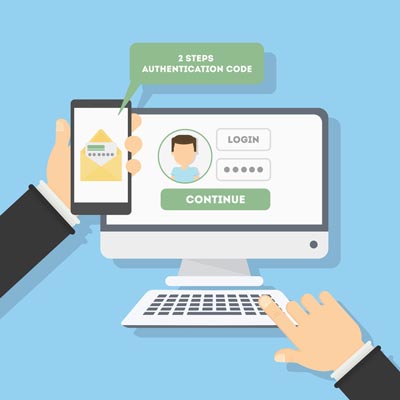
The password isn’t nearly as secure as it used to be. Hackers have begun to take advantage of extremely powerful solutions designed to brute force their way into accounts by using software to rapidly guess thousands of passwords per second, making it extraordinarily difficult to prepare yourself for them. What’s the best way to guarantee that passwords aren’t going to be the downfall of your company? A great start is by taking a close look at password best practices and two-factor authentication.
To get started, let’s review the best practices for creating a password. These include the following:
- Use complex passwords: Your passwords should always be a complex string of letters, numbers, and symbols, including both capital and lower-case letters. Try to keep them as random as possible, without including any specific words or phrases if you can help it. This reduces the chance that your password will be guessed by a hacker.
- Use different passwords for each account: If you use the same password for every single account you have, you run the risk of one password exposing multiple accounts to hackers. Using multiple complex passwords can make them difficult to remember, however, which leads us into our next point.
- Use a password manager: If you’re following password best practices, you’ll notice that remembering passwords is difficult–especially when they are all different and complex. A password manager can store your passwords in a secure vault for access when they are needed, allowing you to use complex passwords at all times without needing to remember them. It sure beats writing down passwords in a Word document or elsewhere, and it’s much more secure than doing so. There are even password managers for businesses that let employers dish out certain credentials to staff in a safe, secure way.
While password best practices are important to ensure maximum security for your accounts, they’re often not enough to secure your business. Hackers are always trying to find new ways to crack even the most powerful of passwords. This is where two-factor authentication comes in. A hacker might be able to replicate the password, but can they replicate your accounts needed for access?
Two-factor authentication works by using a device or email account as a secondary credential for accessing an account or network. The obvious example is a smartphone, which can receive an SMS text message with a code needed to log into an account. Others might have codes sent to secondary email accounts. Either way, the point is that these types of credentials can only be received by the holders of the device, which is much more difficult for a hacker to take advantage of. There are even some types of two-factor authentication that utilize biometrics and near field communication technology (NFC), allowing for even more complexities that hackers will sigh and shake their heads at.
If your business needs to protect sensitive data, two-factor authentication is definitely one line of defense you will need. Catalyst Technology Group has a solution for you. To learn more, reach out to us at (317) 705-0333.
2018 is Expected to See $96 Billion in IT Security Investments
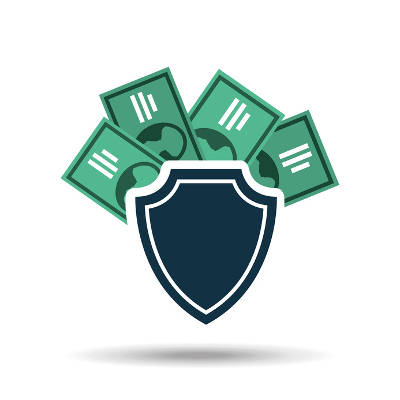
If you were considering increasing your investment into your information security in 2018, you certainly aren’t alone. Gartner released a report that indicated a considerable rise in plans to invest in key security considerations.
Closer analysis of these considerations shows that businesses around the world are paying attention to essential security requirements that have seen relatively smaller portions of budgetary spending in the past, as well as increasing their security investments as a whole. For example, while identity access management sees the smallest amount invested, it is anticipated that there will be an increase in spending of 9.7 percent between 2017 and 2018.
In addition, spending on network security, security services, and infrastructure protection is expected to rise by 6.7 percent, 11 percent, and 7.7 percent, respectively.
Why? Simply put, 2017 was a rough year, in terms of security breaches and other attacks. Worldwide events, like WannaCry and NotPetya, have shown the importance of comprehensive network security preparations. Another recent reinforcement of this lesson came when the Equifax breach came to light. As is usually the case when a certain something hits the metaphorical fan, businesses are taking notice.
However, if these projections prove accurate, it may still not be enough.
With technology becoming more and more critical to business operations with every week that goes by, cybersecurity is only going to become more important–important enough that an overall spending increase of 8% might not be enough of an investment. After all, technology is becoming a factor in more and more elements of life, which gives a botnet more ammunition–and that’s just one example.
Fortunately, many businesses are also planning on outsourcing their security needs to experienced and trusted professionals. Spending on that is expected to increase by 11%. Will some of this increase be due to your investment?
If it is, reach out to Catalyst Technology Group first. Our IT professionals are adept in ways to keep your business secure, as well as ways to improve your business’ performance. Give us a call at (317) 705-0333 for more information.

